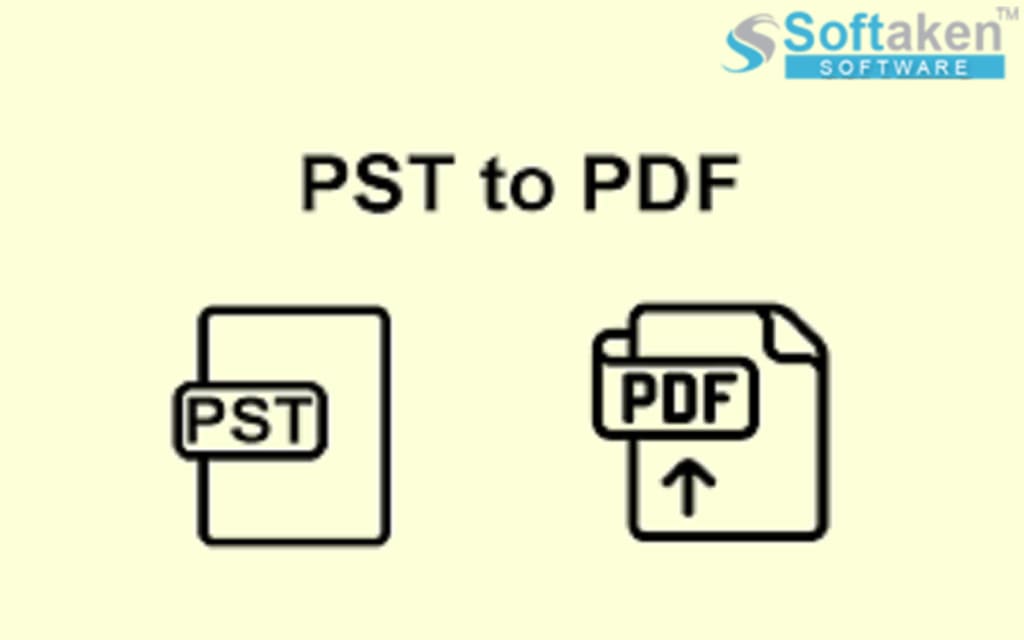Free Methods to Convert or Move a Complete PST Folder to PDF
In this blog, we’ve explored both manual and modern approaches for converting PST files to PDF.

In this article, we'll look at the process of converting PST files into PDF files. To make your life easier, we'll go over both the manual and automatic conversion processes and introduce you to the Outlook PST to PDF Converter. All of your Outlook data can be found in Outlook PST files, which are hard to share since Outlook is the only program that can access them. Data and formatting are preserved when they are converted to PDF, which facilitates sharing and access to your email content. Let's examine a few more advantages to using PDF documents.
Understanding Needs to Convert PST to PDF
The method of converting the PST file to a PDF has several advantages. There are some of them:
- Portability: PST files are limited to certain email clients, but PDFs may be transferred with ease on any device.
- Security: An additional degree of protection can be added by using PDFs to password-protect email communications.
- Compatibility: PDFs are compatible with all devices (desktop, tablet, mobile, etc.), guaranteeing simple access without the need for additional software.
- Use in Presentations: Because of its formatting possibilities and compatibility, PDF is the preferred format for presentations in many enterprises.
- Outlook Independence: Microsoft Outlook is the only program that can access PST files.
You can be aware of how crucial it is to use a PDF file. This should be the next step in the conversion of the Outlook data file to a PDF.
Convert a PST file to PDF documents online for free.
While Outlook doesn't have a built-in PST-to-PDF conversion tool, you can use Microsoft Print or Adobe Acrobat to accomplish the same. There is some technicality to this process. You can export your PST emails to PDFs with attachments manually, but.
Method 1: Print and save as a PDF
You can easily convert a PST file to a PDF using Adobe Acrobat, which is a great option for saving emails as PDFs along with their attachments. However, it’s worth noting that Adobe Acrobat can be expensive, so it may be more suitable for those who can afford it.
Outlook does not come with a facility to convert PST emails to PDFs, but you can use Microsoft Print or Adobe Acrobat to accomplish this. This approach is really skilled. There are manual ways to save your PST emails into PDFs with attachments.
This method may require Adobe Acrobat or a PDF printer installed on your computer to complete the conversion.
Method 2: Use Outlook’s Print to PDF Feature
Despite the fact that Microsoft Print or Adobe Acrobat can be used to convert PST emails to PDFs, Outlook does not have this feature built in. This is a very expert way. To save your PST emails to PDFs with attachments, there are manual techniques available.
- Open Outlook on Microsoft.
- Select the PST file that has to be converted.
- Select the email or file that needs to be converted to PDF.
- Go to the "File" menu and select "Print."
- Select a PDF printer (like Microsoft Print to PDF) from the Print dialog box.
After selecting "Print," choose where you want to store the PDF. Exporting PST to PDF with attachments using manual methods is possible, but it has limitations. These drawbacks can cause trouble. Manual methods might be time-consuming, prone to errors, and unsuitable for large data transfers, making automated or third-party tools a more efficient choice for this task.
Drawbacks of the Above Methods
The following are a few of the limitations of using manual methods:
- Time-consuming: Manually converting PST files to PDF can be a time-consuming process, especially if you have a large number of emails or attachments to convert.
- Complex process: The manual process typically involves opening each email in an email client like Microsoft Outlook and then saving or printing it as a PDF. This can be cumbersome and error-prone, especially if the emails have complex formatting.
- Lack of batch processing: Most manual methods do not offer batch processing capabilities. You may need to convert emails one by one, which is inefficient when dealing with a large number of emails.
- Limited formatting options: Manual methods may not allow you to customize the formatting and layout of the PDF documents, which can be a limitation if you have specific requirements for the output.
- Risk of data loss: There is a risk of data loss or corruption when manually copying and pasting content from PST files to PDF. This can result in missing or corrupted data in the PDF files.
- Security concerns: Handling sensitive or confidential information during manual conversion may pose security risks, especially if you need to share or store the PDF files securely.
To avoid issues with your Outlook PST files, consider using the Softaken Outlook PST to PDF Converter, a professional tool that swiftly transforms PST files into PDF format. With just a few clicks, you can convert multiple PST files in one go. Even if you’re not tech-savvy, the user-friendly interface makes it accessible to all. Let’s now briefly review the entire article.
Conclusion
In this blog, we’ve explored both manual and modern approaches for converting PST files to PDF, highlighting the importance of transitioning to PDF format. While the manual method can be intricate and time-consuming, opting for an automated PST to PDF conversion tool proves to be a user-friendly alternative. The choice ultimately rests with you, but we trust that you’ve found this article informative and that it’s helped you discover a suitable solution for your needs.





Comments (2)
Fascinating! Great work!
it's well-written and full of valuable information.